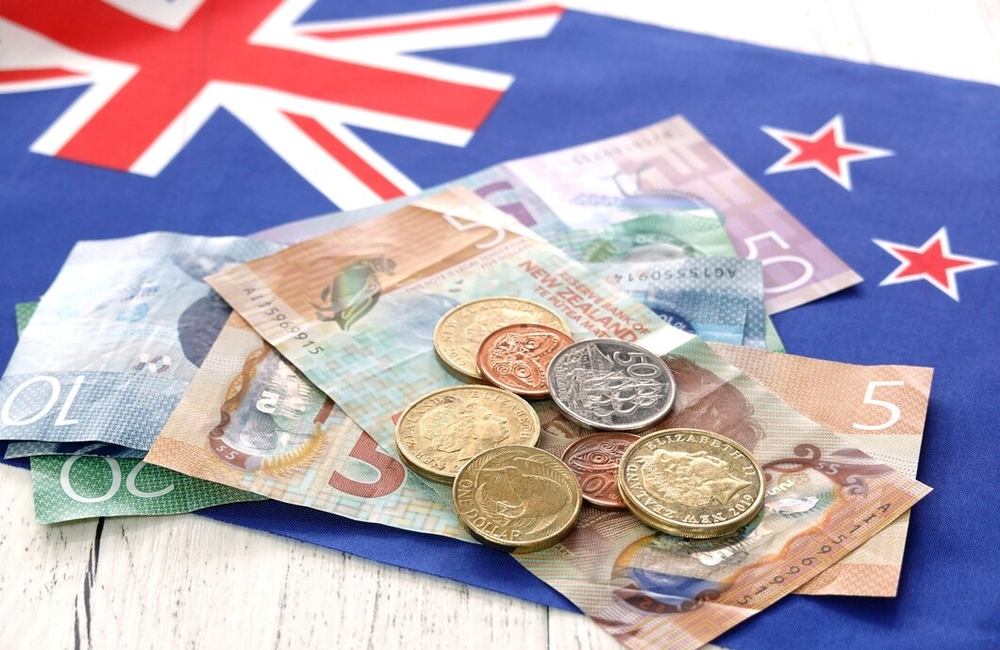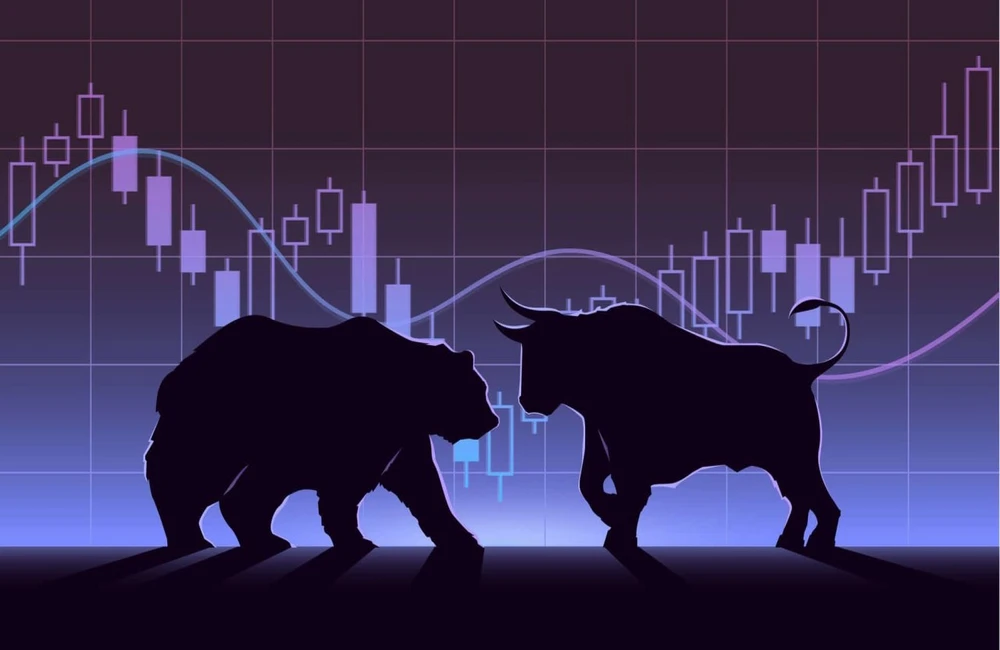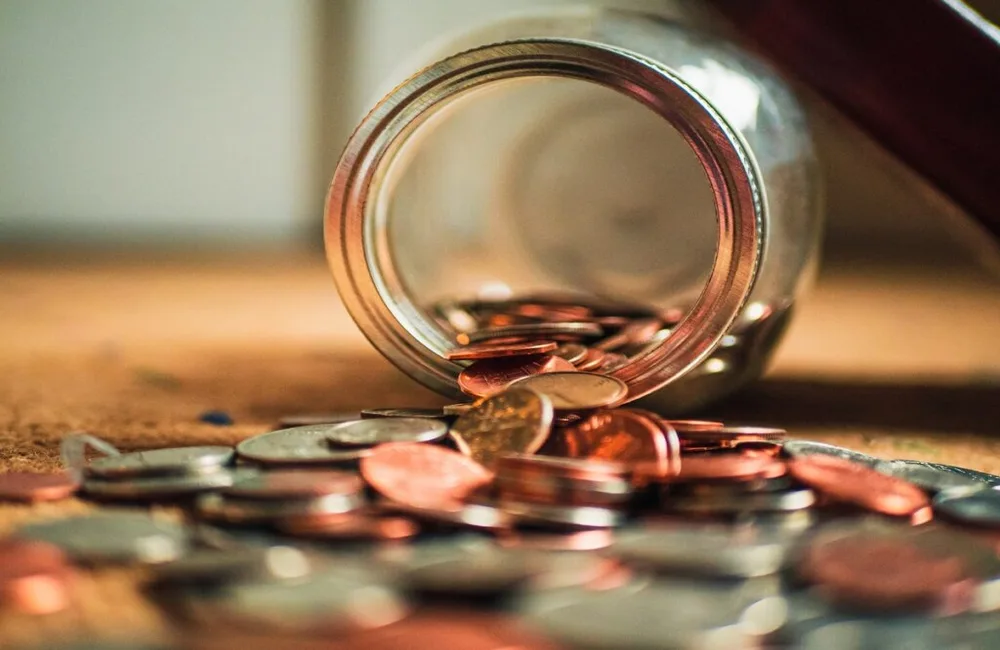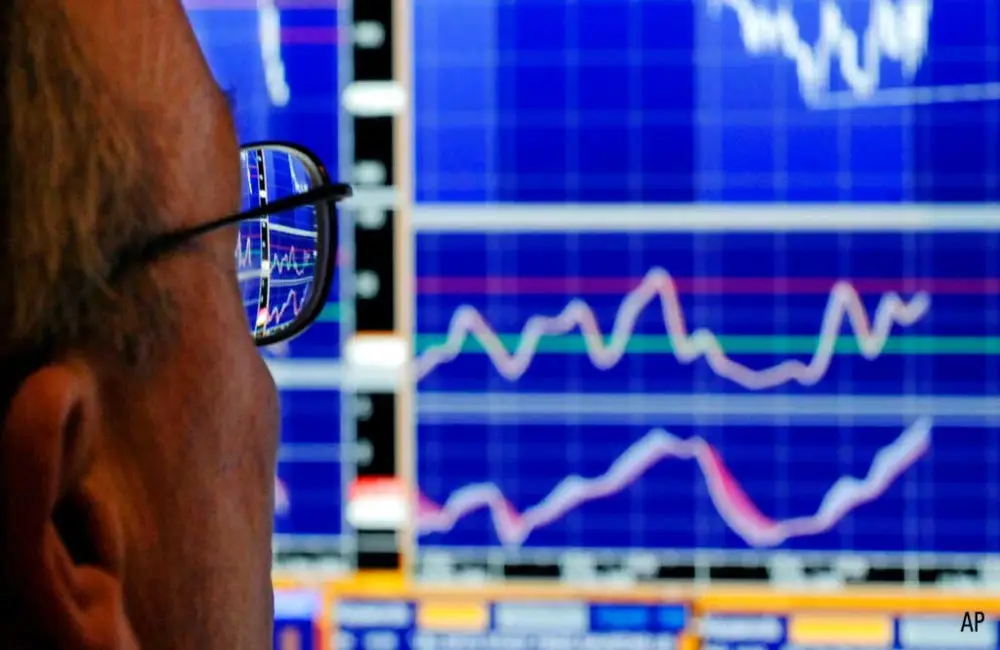So then what do you get? Most investors now expect the US Federal Reserve to keep raising interest rates, and as a result stocks, bonds, oil and gold all fell.
Futures in ASX dipped 161 points or 2.3 per cent, to 6848 by 7:00am AEDT, indicating a fall at the open.
US stocks had their worst day in more than two years after hotter-than-expected inflation figures undercut investors’ expectations that cooling price pressures might slow the Federal Reserve as it continued raising interest rates.
The Dow Jones Industrial Average dropped 3.9%, or almost 1300 points and the S&P 500 fell 4.3%, and the Nasdaq Composite declined 5.2%, with technology stocks taking a brutal pounding, sensitive to interest rates. All three indexes recorded their sharpest one-day declines since June 11, 2020.
Investors were hungry for Tuesday’s release of the consumer-price index, which gave one final big look at inflation ahead of next week’s monthly meeting of the central bank’s interest-rate setting committee. Predictions about the direction of monetary policy have been dominating the markets as investors are pricing higher rates into assets and trying to guess how well the economy will hold up as rates climb.
“It raises the odds of recession if you’ve got the Fed needing to act more aggressively to temper inflation,” said Chris Shipley, chief investment strategist for North America at Northern Trust Asset Management.
In commodities, Brent crude dropped 0.66% to $US98. 38 a barrel, while gold dipped 1.3% to US$1,702.29.
In local bond markets, Australian 2 Year yields slipped to 2.92% and 10 Year yields skewed lower to 3.97%. The yield on 2 Year US Treasuries overseas moved up to 3.74% and the yield on the 10 Year US Treasuries climbed to 2.41%.
The Australian dollar crashed through 67.30 US cents at around 0910 AEDT, from 68.86 at Thursday’s close. The Wall Street Journal Dollar Index, which measures the U.S. currency against 16 others, ticked up to 101.65.
Asia
China stocks closed marginally higher on Tuesday as the market opened after the Mid-Autumn Festival holiday on Monday. The Shanghai Composite Index gained 0.1% to 3263.80 and the Shenzhen Composite Index added 0.3% to 2125.05. The tech-heavy ChiNext Price Index rose 0.1% to 2550.63. Consumer goods and services companies led the gain as analysts anticipate increased demand into the peak holiday season through year-end. The beer maker Tsingtao advanced 3.5 percent, and the restaurant operator Tongqing Lou jumped 10 percent.
Hong Kong’s Hang Seng Index edged 0.3% higher to 19421.34 after a holiday, lifted by strength in auto and energy stocks. News and chatter on Chinese economic policies are the next focus. “With the latest indicators still pointing to slowing growth momentum, there are rising expectations that policy will need to do more, either in the run up to, or post the Party Congress which kicks off on October 16,” analysts at Commerzbank said in a note.
Railway and airline stocks led the way as Japanese stocks closed higher on continued optimism that the government will relax Covid-19-related border rules to lure foreign visitors. The Nikkei Stock Average added 0.3% to 28614.63.
Europe
European shares dropped as fears of inflation in the United States crossed the Atlantic. The Stoxx Europe 600 is falling 6.62 points or 1.55 percent to 421.13, the DAX is losing 213.32 points or 1.59 percent to 13188.95 and the CAC 40 is declining 7.90 points or 1.39 percent to 6245.69.
London’s FTSE 100 finished Tuesday down 1.2% as data showed business sentiment in Germany and, in the European Union more widely, fell back in September, says CMC Markets U.K. analyst Michael Hewson in a note.
Indeed, “regardless of U.S. inflation data indicating a peak in U.S. prices the fact that core prices continue to rise would suggest that inflation is likely to be a lot stickier than markets were probably pricing in,” according to Hewson.
“This suggests that while the story of peaking inflation might still be applicable, taking it down these levels is going to be a much harder fight, necessitating more aggressive rate hikes in the months ahead, beginning with 75 basis points next week,” he adds.
Ocado was the day’s heaviest faller, dropping 15%, followed by Scottish Mortgage Investment Trust and IAG, both down 5% and 4.4% respectively.
North America
US stocks endured their worst day in more than two years after hotter-than-expected inflation figures dented investors’ hope that cooling price pressures could at some stage cause the Federal Reserve to ease off its campaign of interest rate rises.
Investors offloaded everything from stocks and bonds to oil and gold. All 30 stocks in the blue-chip average fell, as did all 11 sectors in the S&P 500. Just four stocks in the broad benchmark were higher in recent trading. Shares of Meta Platforms, Facebook’s parent company, dropped 9.4 percent, BlackRock declined 7.5 percent and Boeing fell 7.2 percent.
The Dow industrials dropped 3.9%, or nearly 1300 points, and the S&P 500 was down 4.3%, while the Nasdaq Composite was 5.2% lower after rate-sensitive technology stocks got whipsawed. All three indexes had their largest one-day losses since June 11, 2020.
Investors had been looking forward to Tuesday’s release of the consumer-price index, one of the last major looks at inflation before the central bank’s interest-rate-setting committee meets next week. Expectations for the path of monetary policy have been dominating the markets as investors have been pricing in higher rates and attempting to predict how well the economy will hold on as rates rise.
“It ratchets up the risk of recession if the Fed needs to act more meaningfully to combat inflation,” said Chris Shipley, chief investment strategist for North America at Northern Trust Asset Management.
For August, the new figures indicated the consumer-price index was up 8.3% from the same month a year earlier. That compared with 8.5% in July and 9.1% in June the highest inflation rate in four decades.
The numbers indicate that inflation is slowing down, though at a slower rate than investors and economists had hoped. Economists polled by The Wall Street Journal had expected consumer prices to increase by 8% in August from a year earlier.
Analysts had been hopeful that officials would signal that they were willing to slow the pace at which they raise interest rates if data suggested that inflation was in fact cooling. That data dashed them, appearing to close the case for the Fed to raise rates at least three-quarters of a percentage point next week. Stock futures were down, bond yields were up and the dollar was stronger after the release.
Traders began to ponder whether the central bank would lift interest rates by a full percentage point next week.
As of Tuesday afternoon, they were pricing in a 28% likelihood of a 1-percentage-point increase at that meeting, up from the 0% odds as of a day earlier, according to CME Group’s FedWatch Tool. Market-based odds of a half-percentage-point rate hike, by contrast, dropped to 0% after being at 9% on Monday, the CME data indicated.
Most analysts expected an increase of 0.75 percentage point.
Looking past next week, the suggestion that inflation is proving more durable than they thought opens up the possibility that the Fed could ultimately raise rates more than markets had been expecting.
Earlier this month, Jerome Powell, the Fed chairman, said the central bank is purely focused on getting inflation down from elevated levels so it doesn’t take hold as it did in the 1970s.
Investors’ reaction to the new inflation reading was evident across classes of assets.
Communication services, technology and consumer discretionary sectors of the S&P 500 all dropped more than 4.5 percent. Semiconductor shares were among the biggest losers as well: Western Digital, Nvidia, Advanced Micro Devices and Micron Technology fell over 7%.























